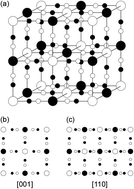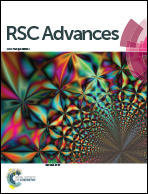The uptake mechanism of palladium ions into Prussian-blue nanoparticles in a nitric acid solution toward application for the recycling of precious metals from electronic and nuclear wastes
Abstract
We have investigated the uptake mechanism of palladium (Pd: one of the most important elements in industry used as a catalyst) ions into Prussian-blue nanoparticles (PBNPs) in a nitric acid solution via high-resolution electron transmission microscopy, inductively coupled plasma atomic emission spectroscopy, powder X-ray diffraction, and ultraviolet-visible-near infrared spectroscopy in combination with first principles calculations. Comparison of the structural and electronic properties of PBNPs between before and after a 24 h sorption test reveals that the Pd2+ ions incorporated into PBNPs by the substitution of Fe2+ ions of the PB framework while maintaining the crystal structure, and the substitution efficiency is estimated to be 87% per PB unit cell. This implies that 0.30 g of Pd can be recovered by using 1 g of PB having the chemical formula KFe(III)[Fe(II)(CN)6]. The present finding suggests that PB (or its analogues) can be applied to recycle noble and rare metals from electronic and nuclear wastes.



 Please wait while we load your content...
Please wait while we load your content...